- Home
- Arthur C. Clarke
Rama: The Omnibus
Rama: The Omnibus Read online
RENDEZVOUS WITH RAMA
Copyright © 1973 by Arthur C. Clarke
First Published: Gollancz, June 1973
RAMA II
Copyright © 1989 by Arthur C. Clarke and Gentry Lee
First Published: Gollancz, November 1989
THE GARDEN OF RAMA
Copyright © 1991 by Arthur C. Clarke and Gentry Lee
First Published: Gollancz, September 1991
RAMA REVEALED
Copyright © 1994 by Arthur C. Clarke and Gentry Lee
First Published: Gollancz, November 1993
BRIGHT MESSENGERS
Copyright © 1995 by Gentry Lee
First Published: Bantam Spectra, June 1995
DOUBLE FULL MOON NIGHT
Copyright © 1999 by Gentry Lee
First Published: Bantam Spectra, March 1999
CONTENTS
RENDEZVOUS WITH RAMA
DEDICATION
SPACEGUARD
INTRUDER
RAMA AND SITA
RENDEZVOUS
FIRST EVA
COMMITTEE
TWO WIVES
THROUGH THE HUB
RECONNAISSANCE
DESCENT INTO DARKNESS
MEN, WOMEN AND MONKEYS
THE STAIRWAY OF THE GODS
THE PLAIN OF RAMA
STORM WARNING
THE EDGE OF THE SEA
KEALAKEKUA
SPRING
DAWN
A WARNING FROM MERCURY
BOOK OF REVELATION
AFTER THE STORM
TO SAIL THE CYLINDRICAL SEA
NY, RAMA
DRAGONFLY
MAIDEN FLIGHT
THE VOICE OF RAMA
ELECTRIC WIND
ICARUS
FIRST CONTACT
THE FLOWER
TERMINAL VELOCITY
THE WAVE
SPIDER
HIS EXCELLENCY REGRETS
SPECIAL DELIVERY
BIOT WATCHER
MISSILE
GENERAL ASSEMBLY
COMMAND DECISION
SABOTEUR
HERO
TEMPLE OF GLASS
RETREAT
SPACE DRIVE
PHOENIX
INTERLUDE
RAMA II
RAMA REVISITED
RAMA RETURNS
TEST AND TRAINING
CREW CONFERENCE
THE GREAT CHAOS
AFTER THE CRASH
LA SIGNORA SABATINI
PUBLIC RELATIONS
BIOMETRY
DIASTOLIC IRREGULARITY
THE COSMONAUT AND THE POPE
ST. MICHAEL OF SIENA
RAMANS AND ROMANS
HAPPY NEW YEAR
GOOD-BYE HENRY
ENCOUNTER
RAMA RAMA BURNING BRIGHT
DEATH OF A SOLDIER
POSTMORTEM
RITE OF PASSAGE
BLESSED SLUMBER
PANDORA'S CUBE
DAWN
NIGHTFALL
SOUNDS IN THE DARKNESS
A FRIEND IN NEED
SECOND SORTIE
TO CATCH A BIOT
EXTRAPOLATION
THE HUNT
POSTMORTEM II
ORVIETO PRODIGY
NEW YORK EXPLORER
MISSING PERSON
STRANGE COMPANIONS
INTO THE PIT
IMPACT COURSE
MAROONED
VISITORS
WATERS OF WISDOM
ALIEN INVITATION
A FRIEND INDEED
TWO EXPLORERS
EXOBIOLOGICAL PSYCHOLOGY
ANOTHER LAIR
NIKKI
THE BETTER PART OF VALOR
PROGRESSIVE MATRICES
WELCOME EARTHLINGS
INTERACTION
HOPE SPRINGS ETERNAL
ESCAPE HARNESS
FLIGHT 302
TRINITY
ONCE A HERO
THE VOICE OF MICHAEL
AN ANSWERED PRAYER
THREE'S COMPANY
HOBSON'S CHOICE
DREAM OF DESTINY
RETURN TO RAMA
ENDANGERED SPACECRAFT
THE FINAL HOUR
ACKNOWLEDGMENTS
THE GARDEN OF RAMA
ACKNOWLEDGMENTS
NICOLE'S JOURNAL
1
2
3
4
5
6
7
8
9
10
11
12
13
AT THE NODE
1
2
3
4
5
6
7
8
9
RENDEZVOUS AT MARS
1
2
3
4
5
6
7
8
9
10
11
12
EPITHALAMION
1
2
3
4
5
6
7
8
9
10
THE TRIAL
1
2
3
4
5
6
7
8
9
10
RAMA REVEALED
ACKNOWLEDGMENTS
PROLOGUE
ESCAPE
1
2
3
4
5
6
7
8
9
10
11
12
THE RAINBOW CONNECTION
1
2
3
4
5
6
7
8
THE EMERALD CITY
1
2
3
4
5
6
7
8
9
10
11
12
WAR IN RAMA
1
2
3
4
5
6
7
8
9
10
RETURN TO THE NODE
1
2
3
4
5
6
7
8
9
10
11
12
BRIGHT MESSENGERS
DEDICATION
ACKNOWLEDGMENTS
INTRODUCTION
THE GREAT CHAOS
1
2
3
4
5
6
7
8
9
10
11
12
VALHALLA
1
2
3
4
5
6
7
8
9
10
11
12
THE DIVINE COMEDY
1
2
3
4
5
6
7
8
9
10
11
12
13
14
15
16
17
18
19
20
DOUBLE FULL MOON NIGHT
DEDICATION
PROLOGUE
JOHANN AND MARIA
ONE
TWO
THREE
FOUR
FIVE
SISTER VIVIEN'S TALE
ONE
TWO
THREE
FOUR
THE MASKETS
ONE
TWO
THREE
FOUR
FIVE
SIX
SEVEN
THE GROTTO
ONE
TWO
THREE
FOUR
FIVE
SIX
THE LAST APPARITION
ONE
TWO
THREE
FOUR
FIVE
SIX
SEVEN
EIGHT
THE BRANKERS
ONE
TWO
THREE
FOUR
RESURRECTION
ONE
TWO
THREE
FOUR
ARTHUR C.
CLARKE
RENDEZVOUS
with RAMA
To Sri Lanka,
where I climbed the
stairway of the Gods
CHAPTER 1
SPACEGUARD
SOONER OR LATER, it was bound to happen. On 30 June 1908, Moscow escaped destruction by three hours and four thousand kilometres—a margin invisibly small by the standards of the universe. Again, on 12 February 1947, yet another Russian city had a still narrower escape, when the second great meteorite of the twentieth century detonated less than four hundred kilometres from Vladivostok, with an explosion rivalling that of the newly invented uranium bomb.
In those days, there was nothing that men could do to protect themselves against the last random shots in the cosmic bombardment that had once scarred the face of the Moon. The meteorites of 1908 and 1947 had struck uninhabited wilderness; but by the end of the twenty-first century, there was no region left on Earth that could be safely used for celestial target practice. The human race had spread from pole to pole. And so, inevitably…
At 09.46 GMT on the morning of 11 September, in the exceptionally beautiful summer of the year 2077, most of the inhabitants of Europe saw a dazzling fireball appear in the eastern sky. Within seconds it was brighter than the sun, and as it moved across the heavens—at first in utter silence—it left behind it a churning column of dust and smoke.
Somewhere above Austria it began to disintegrate, producing a series of concussions so violent that more than a million people had their hearing permanently damaged. They were the lucky ones.
Moving at fifty kilometres a second, a thousand tons of rock and metal impacted on the plains of northern Italy, destroying in a few flaming moments the labour of centuries. The cities of Padua and Verona were wiped from the face of the earth; and the last glories of Venice sank for ever beneath the sea as the waters of the Adriatic came—thundering landwards after the hammer-blow from space.
Six hundred thousand people died, and the total damage was more than a trillion dollars. But the loss to art, to history, to science—to the whole human race, for the rest of time—was beyond all computation. It was as if a great war had been fought and lost in a single morning; and few could draw much pleasure from the fact that, as the dust of destruction slowly settled, for months the whole world witnessed the most splendid dawns and sunsets since Krakatoa.
After the initial shock, mankind reacted with a determination and a unity that no earlier age could have shown. Such a disaster, it was realized, might not occur again for a thousand years—but it might occur tomorrow. And the next time, the consequences could be even worse.
Very well; there would be no next time.
A hundred years earlier a much poorer world, with far feebler resources, had squandered its wealth attempting to destroy weapons launched, suicidally, by mankind against itself. The effort had never been successful, but the skills acquired then had not been forgotten. Now they could be used for a far nobler purpose, and on an infinitely vaster stage. No meteorite large enough to cause catastrophe would ever again be allowed to breach the defences of Earth.
So began Project SPACEGUARD. Fifty years later—and in a way that none of its designers could ever have anticipated—it justified its existence.
CHAPTER 2
INTRUDER
BY THE YEAR 2130, the Mars-based radars were discovering new asteroids at the rate of a dozen a day. The SPACEGUARD computers automatically calculated their orbits, and stored away the information in their enormous memories, so that every few months any interested astronomer could have a look at the accumulated statistics. These were now quite impressive.
It had taken more than a hundred and twenty years to collect the first thousand asteroids, since the discovery of Ceres, largest of these tiny worlds, on the very first day of the nineteenth century. Hundreds had been found and lost and found again; they existed in such swarms that one exasperated astronomer had christened them 'vermin of the skies'. He would have been appalled to know that SPACEGUARD was now keeping track of half a million.
Only the five giants—Ceres, Pallas, Juno, Eunomia and Vesta—were more than two hundred kilometres in diameter; the vast majority were merely oversized boulders that would fit into a small park. Almost all moved in orbits that lay beyond Mars; only the few that came far enough sunwards to be a possible danger to Earth were the concern of SPACEGUARD. And not one in a thousand of these, during the entire future history of the solar system, would pass within a million kilometres of Earth.
The object first catalogued as 31/439, according to the year and the order of its discovery, was detected while still outside the orbit of Jupiter. There was nothing unusual about its location; many asteroids went beyond Saturn before turning once more towards their distant master, the sun. And Thule II, most far-ranging of all, travelled so close to Uranus that it might well have been a lost moon of that planet.
But a first radar contact at such a distance was unprecedented; clearly, 31/439 must be of exceptional size. From the strength of the echo, the computers deduced a diameter of at least forty kilometres; such a giant had not been discovered for a hundred years. That it had been overlooked for so long seemed incredible.
Then the orbit was calculated, and the mystery was resolved—to be replaced by a greater one. 31/439 was not travelling on a normal asteroidal path, along an ellipse which it retraced with clockwork precision every few years. It was a lonely wanderer between the stars, making its first and last visit to the solar system—for it was moving so swiftly that the gravitational field of the sun could never capture it. It would flash inwards past the orbits of Jupiter, Mars, Earth, Venus and Mercury, gaining speed as it did so, until it rounded the sun and headed out once again into the unknown.
It was at this point that the computers started flashing their 'Hi there! We have something interesting' sign, and for the first time 31/439 came to the attention of human beings. There was a brief flurry of excitement at SPACEGUARD Headquarters, and the interstellar vagabond was quickly dignified by a name instead of a mere number. Long ago, the astronomers had exhausted Greek and Roman mythology; now they were working through the Hindu pantheon. And so 31/439 was christened Rama.
For a few days, the news media made a fuss of the visitor, but they were badly handicapped by the sparsity of information. Only two facts were known about Rama—its unusual orbit, and its approximate size. Even this was merely an educated guess, based upon the strength of the radar echo. Through the telescope, Rama still appeared as a faint, fifteenth magnitude star—much too small to show a visible disc. But as it plunged in towards the heart of the solar system, it would grow brighter and larger, month by month; before it vanished for ever, the orbiting observatories would be able to gather more precise information about its shape and size. There was
plenty of time, and perhaps during the next few years some spaceship on its ordinary business might be routed close enough to get good photographs. An actual rendezvous was most unlikely; the energy cost would be far too great to permit physical contact with an object cutting across the orbits of the planets at more than a hundred thousand kilometres an hour.
So the world soon forgot about Rama; but the astronomers did not. Their excitement grew with the passing months, as the new asteroid presented them with more and more puzzles.
First of all, there was the problem of Rama's light curve. It didn't have one.
All known asteroids, without exception, showed a slow variation in their brilliance, waxing and waning within a period of a few hours. It had been recognized for more than two centuries that this was an inevitable result of their spin, and their irregular shape. As they toppled end over end along their orbits the reflecting surfaces they presented to the sun were continually changing, and their brightness varied accordingly.
Rama showed no such changes. Either it was not spinning at all or it was perfectly symmetrical. Both explanations seemed equally unlikely.
There the matter rested for several months, because none of the big orbiting telescopes could be spared from their regular job of peering into the remote depths of the universe. Space astronomy was an expensive hobby, and time on a large instrument could easily cost a thousand dollars a minute. Dr. William Stenton would never have been able to grab the Farside two-hundred-metre reflector for a full quarter of an hour, if a more important programme had not been temporarily derailed by the failure of a fifty cent capacitor. One astronomer's bad luck was his good fortune.
Bill Stenton did not know what he had caught until the next day, when he was able to get computer time to process his results. Even when they were finally flashed on his display screen, it took him several minutes to understand what they meant.
The sunlight reflected from Rama was not, after all, absolutely constant in its intensity. There was a very small variation—hard to detect, but quite unmistakable, and extremely regular. Like all the other asteroids, Rama was indeed spinning. But whereas the normal 'day' for an asteroid was several hours, Rama's was only four minutes.
Dr. Stenton did some quick calculations, and found it hard to believe the results. At its equator, this tiny world must be spinning at more than a thousand kilometres an hour; it would be rather unhealthy to attempt a landing anywhere except at the poles. The centrifugal force at Rama's equator must be powerful enough to flick any loose objects away from it at an acceleration of almost one gravity. Rama was a rolling stone that could never have gathered any cosmic moss; it was surprising that such a body had managed to hold itself together, and had not long ago shattered into a million fragments.

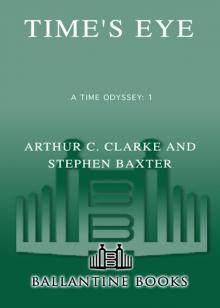 Time's Eye
Time's Eye The Sentinel
The Sentinel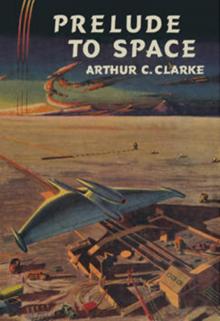 Prelude to Space
Prelude to Space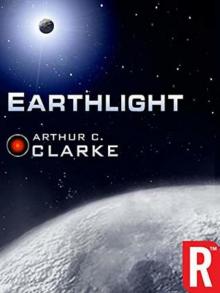 Earthlight (Arthur C. Clarke Collection)
Earthlight (Arthur C. Clarke Collection)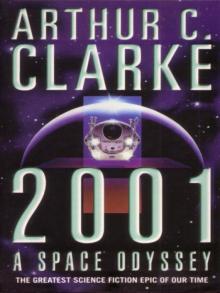 2001: A Space Odyssey
2001: A Space Odyssey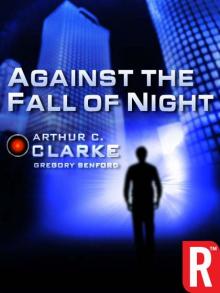 Against the Fall of Night
Against the Fall of Night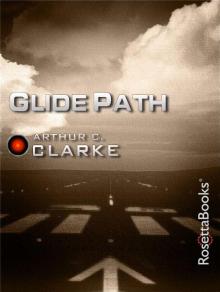 Glide Path
Glide Path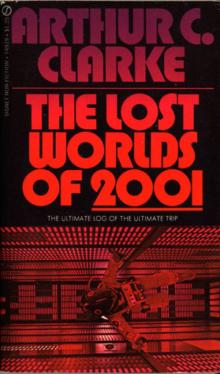 The Lost Worlds of 2001
The Lost Worlds of 2001 The Trigger
The Trigger Reach for Tomorrow
Reach for Tomorrow Islands in the Sky
Islands in the Sky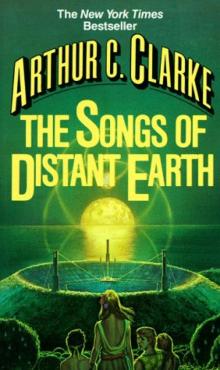 The Songs of Distant Earth
The Songs of Distant Earth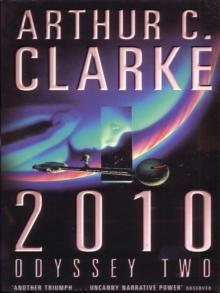 2010: Odyssey Two
2010: Odyssey Two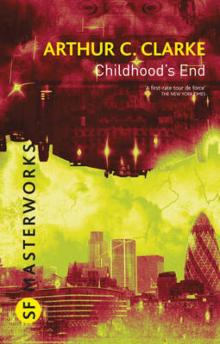 Childhood's End
Childhood's End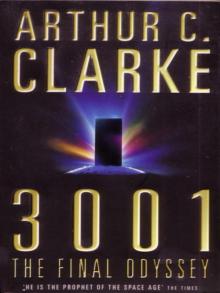 3001: The Final Odyssey
3001: The Final Odyssey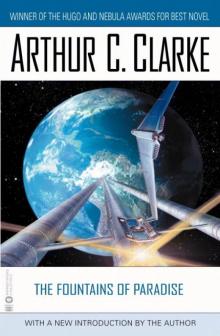 The Fountains of Paradise
The Fountains of Paradise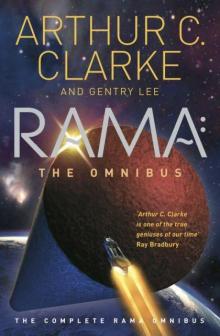 Rama: The Omnibus
Rama: The Omnibus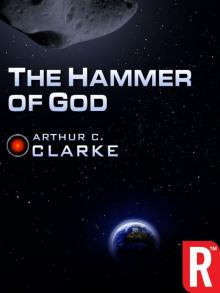 The Hammer of God
The Hammer of God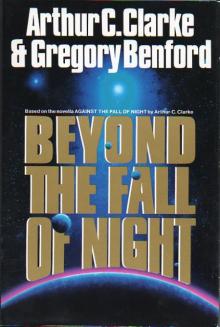 Beyond the Fall of Night
Beyond the Fall of Night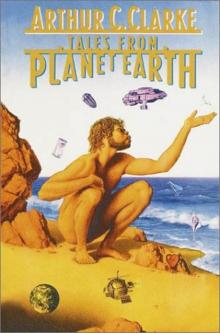 Tales From Planet Earth
Tales From Planet Earth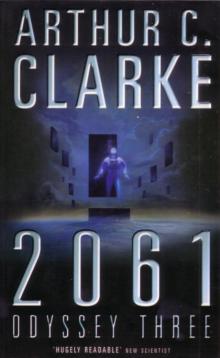 2061: Odyssey Three
2061: Odyssey Three Tales From the White Hart
Tales From the White Hart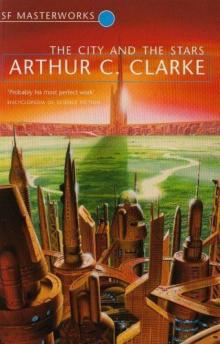 The City and the Stars/The Sands of Mars
The City and the Stars/The Sands of Mars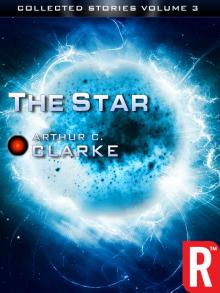 The Star
The Star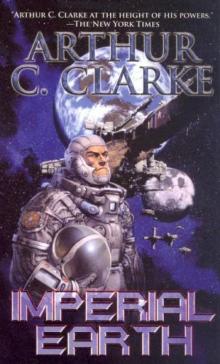 Imperial Earth
Imperial Earth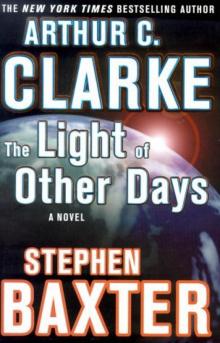 The Light of Other Days
The Light of Other Days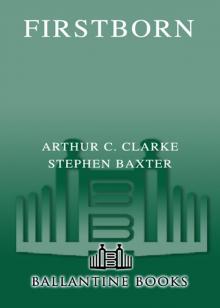 Firstborn
Firstborn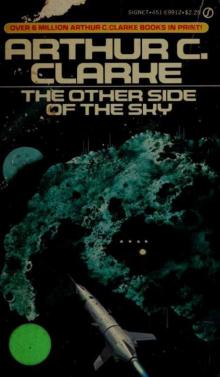 The Other Side of the Sky
The Other Side of the Sky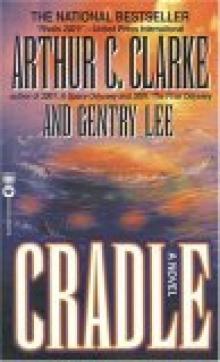 Cradle
Cradle The Wind From the Sun
The Wind From the Sun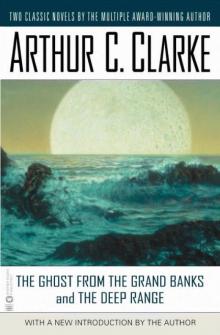 The Ghost From the Grand Banks and the Deep Range
The Ghost From the Grand Banks and the Deep Range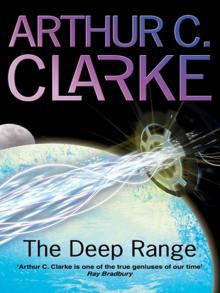 The Deep Range
The Deep Range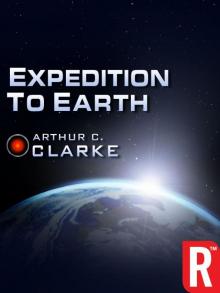 Expedition to Earth
Expedition to Earth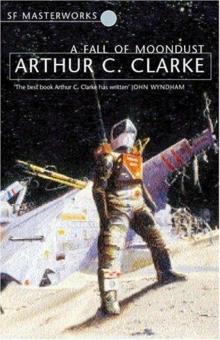 A Fall of Moondust
A Fall of Moondust Dolphin Island (Arthur C. Clarke Collection)
Dolphin Island (Arthur C. Clarke Collection)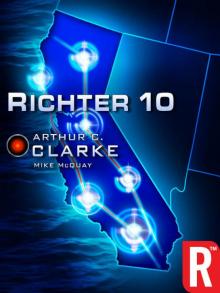 Richter 10
Richter 10 The City and the Stars
The City and the Stars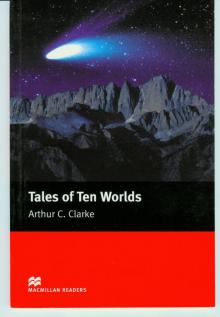 Tales of Ten Worlds
Tales of Ten Worlds Dolphin Island
Dolphin Island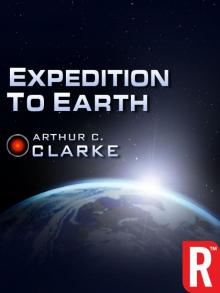 Expedition to Earth (Arthur C. Clarke Collection: Short Stories)
Expedition to Earth (Arthur C. Clarke Collection: Short Stories)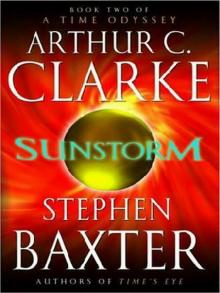 Sunstorm
Sunstorm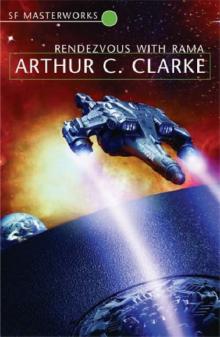 Rendezvous with Rama
Rendezvous with Rama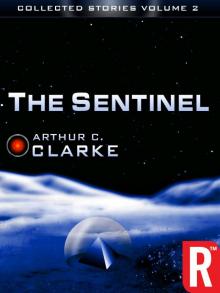 The Collected Stories of Arthur C. Clarke
The Collected Stories of Arthur C. Clarke Trouble with the Natives
Trouble with the Natives Rama Revealed r-4
Rama Revealed r-4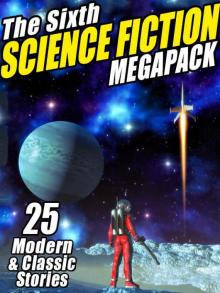 The Sixth Science Fiction Megapack
The Sixth Science Fiction Megapack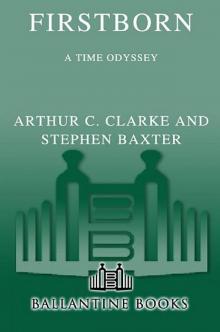 Firstborn to-3
Firstborn to-3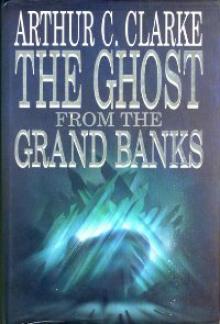 The Ghost from the Grand Banks
The Ghost from the Grand Banks Into the Comet
Into the Comet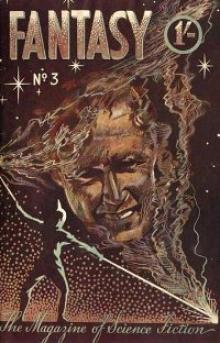 The Fires Within
The Fires Within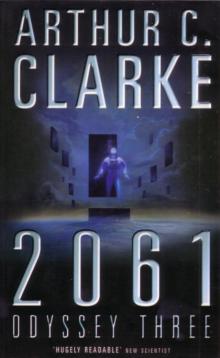 2061: Odyssey 3
2061: Odyssey 3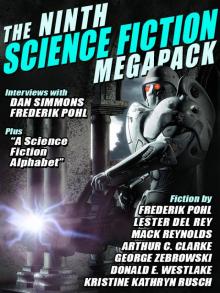 The Ninth Science Fiction Megapack
The Ninth Science Fiction Megapack The Coast of Coral
The Coast of Coral The Ghost from the Grand Banks (Arthur C. Clarke Collection)
The Ghost from the Grand Banks (Arthur C. Clarke Collection)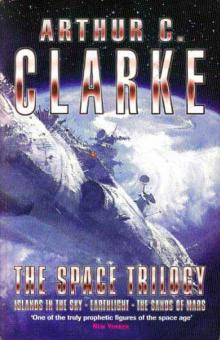 The Space Trilogy
The Space Trilogy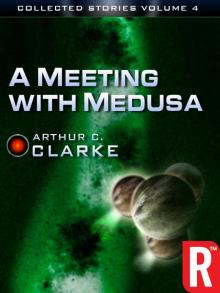 A Meeting With Medusa
A Meeting With Medusa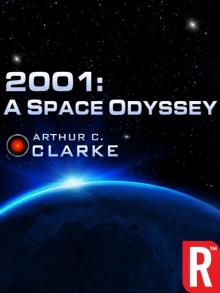 2001: A Space Odyssey (Arthur C. Clarke Collection: The Odyssey)
2001: A Space Odyssey (Arthur C. Clarke Collection: The Odyssey) Islands in the Sky (Arthur C. Clarke Collection)
Islands in the Sky (Arthur C. Clarke Collection) Rama II r-2
Rama II r-2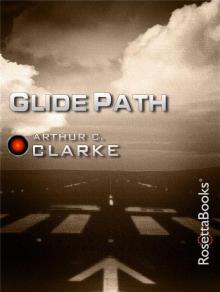 Glide Path (Arthur C. Clarke Collection)
Glide Path (Arthur C. Clarke Collection)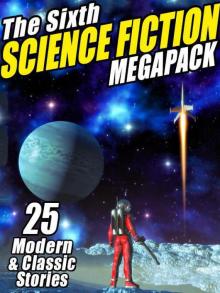 The Sixth Science Fiction Megapack: 25 Classic and Modern Science Fiction Stories
The Sixth Science Fiction Megapack: 25 Classic and Modern Science Fiction Stories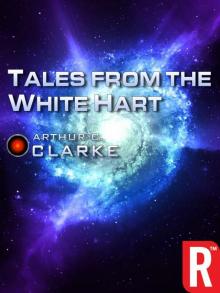 Tales from the White Hart (Arthur C. Clarke Collection: Short Stories)
Tales from the White Hart (Arthur C. Clarke Collection: Short Stories) The Reluctant Orchid
The Reluctant Orchid